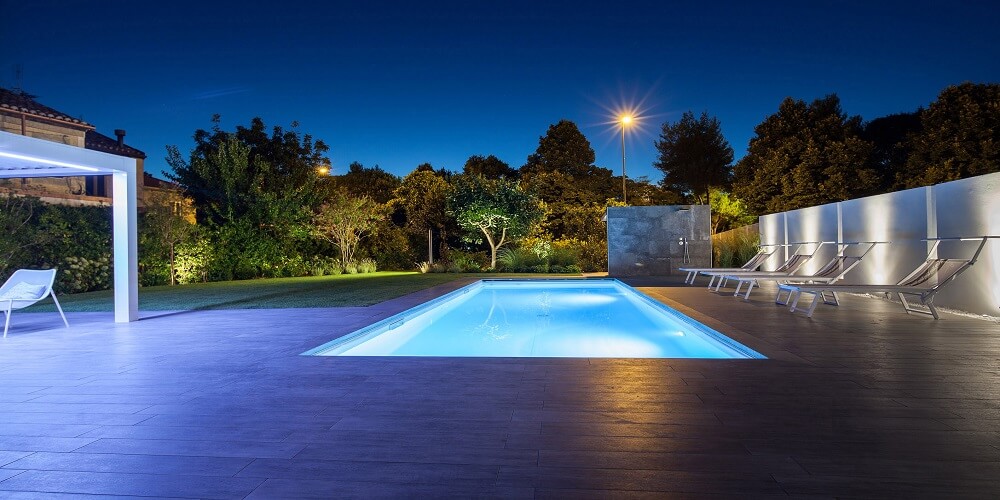If you have an indoor swimming pool that you feel needs some lighting, there are a few things you need to consider and pay a lot of attention to. This will help you come up with an ideal lighting design that is not only safe but one which makes swimming in your indoor pool an enjoyable experience.
If you are planning to fix indoor swimming pool lighting, you will find this article particularly helpful. Here you’ll learn about ratings, glare, light levels, fixture placement, and many others. You’ll also learn how the lighting controls can help in visual comfort, improving safety, and increasing energy efficiency.
Factors to Consider When Selecting Lighting for Your Indoor Pool
1. Lighting Levels
When selecting lighting for your indoor swimming pool, you will need to ask yourself if the current lighting provides a neat and inviting atmosphere that will encourage people to use your facility. You will also need to determine the use of your swimming pool. Is it a recreational facility? Is it meant for swimming competitions that will be televised? Is it somewhere in between the two? Knowing the use of your pool will help you determine the recommended lighting levels.
The recommendations provided by the Illuminating Engineering Society (IES) help determine the uniformity ratios and the minimum lighting levels for your pool. However, higher lighting levels might be needed depending on the unique needs of your pool. For example, you will need double the light if you want to film at ultra-high-definition.
2. The Placement of Light Fixtures
The placement of light fixtures is determined by the requirements set by the National Electric Code (NEC). However, it is still a wise decision to place your light fixtures in places that will not cause any harm. You can place them on slides, platforms, dicing boards, or any place that’s unique to your recreational facility.
3. The Glare on the Water Surface
The light fixtures directed towards the surface of the pool often cause glare. The glare can result in a situation where the lifeguard’s vision is obstructed or obscured. This can also cause a serious problem for the swimmers, spectators, and instructors who are constantly looking at the surface of the swimming pool. Additionally, lap swimmers may be blinded by lights when they attempt a backstroke. To avoid the problems mentioned here, consider the use of indirect lighting in your pool.
4. Indirect Lighting
One way you can do this is by placing your light fixtures in a place where they can be rotated upwards such that the light is directed to the ceiling. If this is done properly, you will create a unique glow on your ceiling which is evenly distributed on your pool’s surface. This can only be possible, however, when the wall and ceiling finishes are with bright colors in a matte finish.
5. Optics
If you want the light level in your pool to be uniform, you should try light fixtures that can be rotated or angled to spread the light. This option is beneficial when you have a pool with a low ceiling height or when you are trying to maximize the number of fixtures in your pool space.
Conclusion
So there you have it! Having the right lighting will always help transform your occasion to something even more memorable.
